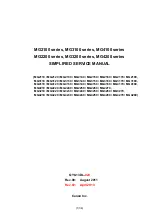
15
ROCK IMAGER User's Guide | Chapter 4: Overview
Imaging Methods
ROCK IMAGER comes standard with a visible light imager. Additional imaging methods, such as UV,
FRAP, and SONICC can be added at an additional cost.
Visible Light
. Each visible light imager comes with chromatically corrected optics with a 1-12x
continuous zoom option or fixed objectives, for the cost-conscious.
Ultraviolet Light
. UV imaging harnesses the intrinsic florescence of tryptophan under UV light to
signify the presence of a protein, reducing false positive and false negative identification of protein
crystals. UV imaging is available as a single light path that works in tandem with the visible light imager
(best quality), or it can be added to the visible light imaging method in a single light path for a more
cost-conscious product.
FRAP (Fluorescence Recovery After Photobleaching)
. FRAP imaging, useful for screening LCP protein
crystallization conditions based on membrane diffusion rates, is a process by which a laser bleaches
a dye-labeled protein in LCP. The imager then photographs post-bleach activity recording the protein’s
activity as the bleached dye-labeled protein diffuses out of the LCP and new protein diffuses in. FRAP
is available as a separate imaging method in a RI 1000 chassis, or as a standalone benchtop imaging
system.
SONICC (Second Order Nonlinear Imaging of Chiral Crystals)
. SONICC imaging detects the second
harmonic signal generated by chiral crystals, such as proteins, and is capable of detecting micro
crystals (<1 µm) in opaque solutions. It is available as a separate imaging system in a RI 1000 chassis,
or as a standalone benchtop imaging system.
FACIT (FORMULATRIX Advanced Contrast Imaging Technology)
. FACIT allows you to control the
illumination pattern on a drop in order to see more crystal facets. Any light pattern can be projected
onto a drop, including top-left, top-right, bottom-left, bottom-right, darkfield, and brightfield
illumination. Illumination patterns are controlled by selecting one of the options form the
Illumination
list in the ROCK IMAGER software.
Multi-Fluorescence Imaging (MFI)
. MFI is an hardware module that is optional for ROCK IMAGER
1000 or ROCK IMAGER 2 models. MFI has three different filter modules that allow you to capture the
intrinsic UV fluorescence from aromatic amino acids or to detect fluorescence from labeled proteins.
MFI is especially useful in differentiating between crystals of a protein-protein complex and crystals
of just one protein.
Ultraviolet (UV) Absorption Imaging
. UV absorption is an hardware setup that allows scientists to
acquire absorption images. The UV absorption imager transmits UV light through the sample and
then detects the same wavelength UV light on the camera. Areas that absorb the UV light create
contrast, allowing you to see differentiating features in your crystallization drops. UV absorption can
be helpful for imaging drops that are not UV fluorescence, for example, DNA, RNA, and proteins
without tryptophan.
















































